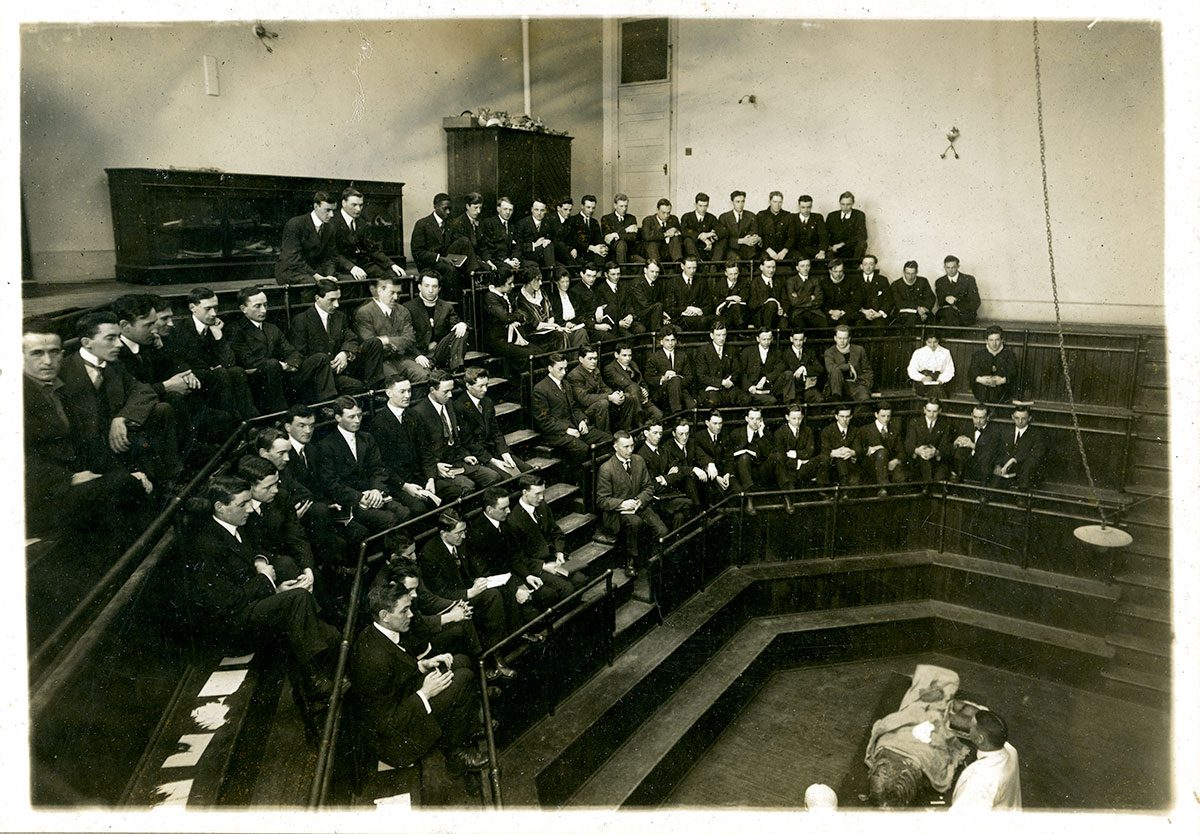
Students at a lecture at the Medical College in 1915. The class included five women and the University’s first black student, Dr. Hewburn Greenridge from British Guiana. The photograph shows early signs of inclusiveness in education at the University. Dr. G.M. Little fonds (PC 26, A79-63).
Exhibit on history of the University of Manitoba explores the legacy of Alexander Kennedy Isbister
Archives & Special Collections will launch a new exhibit on Feb. 28, 2017 to mark the 140th anniversary of the University of Manitoba. Founded in 1877, the University became the first degree granting body in Western Canada.
The institution itself did not offer courses until 1904 but in its first years, the University conferred degrees upon graduates of Manitoba College, Saint John’s College and Saint Boniface College. These colleges offered theological courses and admitted students of Presbyterian, Anglican and Catholic faiths respectively but they worked together under the newly formed University of Manitoba to offer a wider variety of courses related to arts and sciences.
While the University offered higher education to students of different denominations, its classrooms were still solely reserved for white men in these first years.
The first break into this once exclusionary space came in 1886, when Jessie Holmes fought to become the first woman admitted to the University. However, the idea of a more inclusive University was first sowed in 1883 following the death of Dr. Alexander Kennedy Isbister.
A Métis lawyer who spent some of his formative years in the Red River Colony, Isbister bequeathed $83,000 to the University of Manitoba, expressly stating that the fund be used to assist students of merit, no matter their gender and “without distinction of race, creed, language or nationality.”
As Isbister’s ideal of higher education for all was before its time, the face of the student body did not change overnight. But, in the decades to follow, his ideas began to germinate and the institution would see many more students who embodied Isbister’s ideal leave its halls, degree in hand.
The Legacy of Alexander Isbister series will look at the impact of his legacy and the evolution of identity and diversity at the University of Manitoba.
As a multi-part exhibit, the series will look at moments in the University’s history that have defined, and redefined the institution’s identity, furthered Isbister’s ideals and embodied the values he held close as a defender of equal rights and an advocate of education for all.
Archives & Special Collections, Rm 330, Monday to Friday – 8:30 a.m. to 4:30 p.m.
Celebrations begin Feb. 28, 2017
Phone: 204-474-9986
Email: archives@umanitoba.ca
Over the course of the 140th year, Archives & Special Collections will also be releasing 140 historic images related to the University’s history. The archival photographs will be released through the Archives’ Facebook and Twitter pages, as well as our newly launched Instagram account.
Further upcoming exhibits
April 1 – students and Vimy Ridge to celebrate the hundredth anniversary
April 24 – tentative start date for the 150th anniversary of St. John’s College
July 1 – 150th anniversary of Canada, what Manitoba looked like when Canada was formed
September 1 – tentative start date for the 50th anniversary of U of M Press







Very interesting, facts I did not know